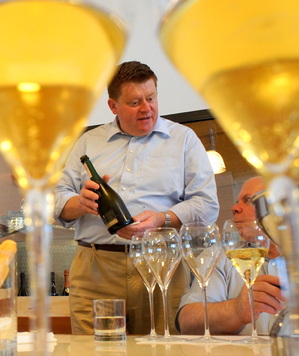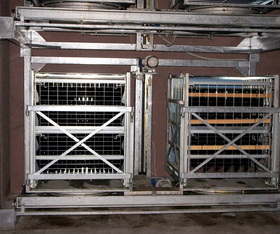 FRANCIACORTA, Italy--It is, we are reminded, the fourth largest industrial region of Europe, the 150-mile, high-tech, high-design corridor between Milan and Venice. It's a virtual strip mall of small factories lining the A4 autostrada: metal works, plastics, chemicals, building materials, box companies, adhesives, truck parts.
FRANCIACORTA, Italy--It is, we are reminded, the fourth largest industrial region of Europe, the 150-mile, high-tech, high-design corridor between Milan and Venice. It's a virtual strip mall of small factories lining the A4 autostrada: metal works, plastics, chemicals, building materials, box companies, adhesives, truck parts.
It was Sunday when I arrived, so the chauffeur-driven BMW that picked me up for the half-hour transfer from Milan cruised along at 95 miles an hour before following the vacationers into the Alpine countryside at the base of Lake Iseo. Here too, in villages crowded with second homes, country hotels and international campgrounds, were more machine shops, contractors, equipment rentals, consulting services, construction supplies. Agriculture--the occasional small field of corn planted between a gas station and a furniture stor--takes a back seat to real estate developers seeking land for housing and commerce like shopping centers. And yet, here in the foothills of the Alps, there was born 51 years ago an entirely new premium wine concept called Franciacorta.
The boundaries of today's Franciacorta DOCG were actually drawn back in 1270. Inside the lines, 2,500 hectares, about 6,250 acres have now been designated for vineyards. (Washington State has ten times as many acres under vine.) What sets Franciacorta apart is the wine produced here: an exceptional sparkling wine made in the traditional (Champagne) method from chardonnay, pinot blanc and pinot noir grapes. About 100 producers release 12 million bottles a year, some ten percent of it sent beyond Italy's borders, and only ten percent of that reaches US shores. (Compare this, if you can, with the sparkling wines of Prosecco, just two hours's drive to the east, which produces 150 million bottles a year using the bulk Charmat method.)
It's a shame that Franciacorta is almost unknown. The wines are astonishingly good, and cost less than half what French Champagne commands. The Consorzio of Franciacorta producers would like to ramp up exports to the US, so they're hosting a delegation of journalists and sommeliers this week to tell their story and present their wines.
 Today's first visit was at a winery called Barone Pizzini, which grows grapes on 120 acres, produces 250,000 bottles, and is managed by one of its owners, Silvano Brescianini. (He's pouring for Master Sommelier Wayne Belding of Colorado in the picture.) A former restaurateur, he converted Pizzini to a fully organic operation in the last decade, not because organic is fashionable but because it produces better wine. Brescianini will be the next president of the Consorzio, so he can lead by example. His bottles come from France, where the standards are stricter than in Italy (although the largest manufacturers in both countries are owned by the American conglomerate, Owings Illinois), but there's no drama about hand-riddling. Pizzini uses mechanical giropallets that riddle 504 bottles at once and comlete the process in hours, not weeks. Says Brescianini, "If a machine can do it, we'll use the machine and save our labor force for work that requires intelligence, like pruning and picking."
Today's first visit was at a winery called Barone Pizzini, which grows grapes on 120 acres, produces 250,000 bottles, and is managed by one of its owners, Silvano Brescianini. (He's pouring for Master Sommelier Wayne Belding of Colorado in the picture.) A former restaurateur, he converted Pizzini to a fully organic operation in the last decade, not because organic is fashionable but because it produces better wine. Brescianini will be the next president of the Consorzio, so he can lead by example. His bottles come from France, where the standards are stricter than in Italy (although the largest manufacturers in both countries are owned by the American conglomerate, Owings Illinois), but there's no drama about hand-riddling. Pizzini uses mechanical giropallets that riddle 504 bottles at once and comlete the process in hours, not weeks. Says Brescianini, "If a machine can do it, we'll use the machine and save our labor force for work that requires intelligence, like pruning and picking."
Not to mention marketing. Franciacorta is made on very expensive land, .which means it has to carry enough quality and prestige to justify its (relatively) high price. Sure, the name's only been around snce 1961, which makes it very young in the tradition-bound world of wine marketing. But it's a challenge that today's wine marketng agencies relish.
Leave a comment